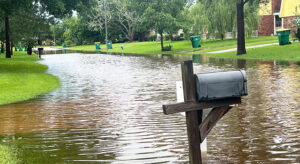Protecting your home against floods is more important than ever. Learn how to prevent home flooding as much as you possibly can.
Will your car insurance cover your garage door? Here's how car insurance works when it comes to garage door damage.
First party medical benefits coverage in Pennsylvania can help cover your medical expenses if you are injured in a covered accident.
If you’re a homeowner, you may wonder, “Does home insurance cover ice storms?” The answer depends on a few factors. Keep reading to find out if your home policy covers you.
All it takes is one mishap to start a fire in your home. Follow these home fire safety tips to keep your family protected and your home safe.
The declarations page of your home insurance policy captures the key parts of your policy. It helps you quickly understand all of your coverages, limits, discounts and more.
Personal injury protection in New Jersey can help cover your medical expenses if you are injured in a covered accident.
Having too much homeowners insurance can be costly. Find out if your home is overinsured and what you can do about it.
Most insurance carriers want to inspect your home before they finalize your policy. Find out how to prepare for a home inspection.
Getting a car insurance quote can be a hassle if you don't have the right information handy. Here's the information you need.
Personal injury protection in Massachusetts can help cover your medical expenses if you are injured in a covered accident.
Home insurance rates vary from company to company. So how is home insurance calculated? There are several factors involved.
What happens if a contractor causes damage to your property? Accidents can happen. Find out if you’re covered by your homeowners insurance.
Storms can suddenly cause all sorts of damage to your vehicle. Here's how car insurance can help cover storm damage.
Learn more about how car insurance covers you in another car, and what to do before you borrow a friend's car.
Medical Payments coverage protects you if guests are injured on your property, whether or not you’re to blame. And it’s part of your homeowners insurance policy!
Loss of Use coverage helps pay for your living expenses if your home is damaged and you’re forced out. It’s a standard part of homeowners insurance.
Personal Property coverage pays to replace your personal items if they’re damaged or stolen. Does your home insurance policy cover you?
Your car insurance may be able to cover a child car seat replacement after an accident if you have the right coverage.
The right car insurance coverage can help pay for repairs after an accident. Here's how to get insurance to pay for car repairs.


















